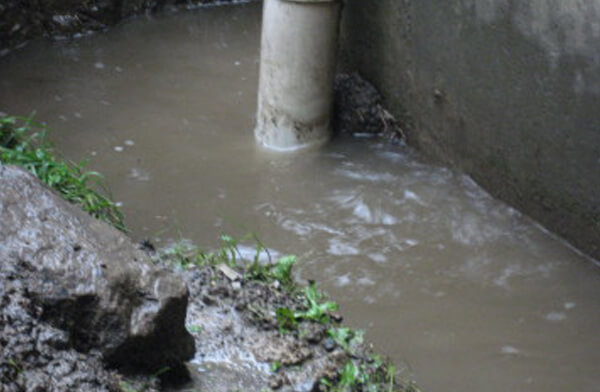Uncovering Hidden Water Line Leaks: 6 Practical Detection Methods
Uncovering Hidden Water Line Leaks: 6 Practical Detection Methods
Blog Article
Right here down the page you can find a lot of sensible content concerning Leaking water lines.

Early detection of leaking water lines can minimize a potential disaster. Some tiny water leaks may not be visible.
1. Examine the Water Meter
Every house has a water meter. Examining it is a surefire way that assists you uncover leakages. For starters, turn off all the water sources. Guarantee no person will purge, make use of the faucet, shower, run the washing maker or dishwashing machine. From there, go to the meter and watch if it will change. Given that no one is using it, there need to be no motions. If it relocates, that suggests a fast-moving leak. Also, if you spot no changes, wait a hr or 2 as well as check back once more. This indicates you might have a slow leak that might even be below ground.
2. Examine Water Consumption
If you identify abrupt modifications, regardless of your consumption being the same, it implies that you have leakages in your plumbing system. An abrupt spike in your costs indicates a fast-moving leak.
A steady rise every month, also with the exact same practices, shows you have a sluggish leakage that's likewise gradually rising. Call a plumber to thoroughly check your property, especially if you feel a warm area on your floor with piping underneath.
3. Do a Food Coloring Test
When it pertains to water usage, 30% comes from bathrooms. Examination to see if they are running effectively. Decline flecks of food color in the tank and wait 10 mins. There's a leakage between the tank and also bowl if the shade in some way infiltrates your bowl throughout that time without flushing.
4. Asses Outside Lines
Don't neglect to check your exterior water lines also. Must water leak out of the connection, you have a loosened rubber gasket. One tiny leakage can lose lots of water and surge your water bill.
5. Analyze the circumstance and also examine
Home owners ought to make it a behavior to check under the sink counters as well as also inside closets for any bad odor or mold development. These 2 warnings indicate a leak so prompt interest is needed. Doing regular inspections, even bi-annually, can save you from a major issue.
If you recognize your home is already old, keep a watchful eye on your heating systems, tubes, pipelines and so on. Check for discolorations and deteriorating as the majority of pipelines as well as devices have a life expectancy. They will also naturally deteriorate due to tear and also put on. If you presume dripping water lines in your plumbing system, don't wait for it to rise. Call an expert plumber right now so you don't wind up with a dreadful mess in your house.
Early detection of leaking water lines can minimize a possible catastrophe. Some tiny water leakages may not be noticeable. Examining it is a guaranteed means that helps you find leakages. One tiny leak can lose bunches of water as well as increase your water costs.
If you suspect leaking water lines in your plumbing system, don't wait for it to intensify.
How to Know If Your Home Has a Hidden Leak
Water Meter Reveals Inexplicable Water Usage
If you’d like to test whether or not there’s a leak somewhere in your home, you can do this using your water meter. Here is how to conduct the test:
Don’t use any water in your home for at least 30 minutes; this also means not turning on faucets or water-using appliances.
Go outside, and check your water meter for activity.
If your water meter shows that there was activity, even though no one was using any water, this proves that there is a leak in your home.Visible Mold or Mildew Growth
Leaks behind walls create moist, dark environments that allow mold and mildew to grow and thrive. Eventually, you might see mold growth forming on the wall closest to a hidden leak.
If mold is growing in an area that receives a high amount of moisture, such as a bathroom, it may simply be an indication that better ventilation is needed. However, if you see mold growth on a wall or the ceiling in an area where you would not expect, you probably have a hidden leak.
Musty, Mildew Odor
Sometimes you might not be able to see the mold or mildew that is growing as a result of a leak. However, the smell can give the problem away just as easily. If you catch a whiff of something musty, there’s a good chance that old water is collecting somewhere in your home that you can’t see.
Stained/Warped Walls, Ceilings, or Floors
When your home soaks up water, a variety of red flags can become visible, including ceiling stains, bubbling drywall, warped walls, and sagging floors. While these issues can be caused by excess humidity, they can also be signs that a pipe or plumbing connection has started leaking behind your walls.
Inexplicably High Water Bill
After a while, you get a general sense for what your water bill should be. If you own a pool or sprinkler system, your bill will tend to be higher during summer. However, if you receive a water bill that seems especially high, and you can’t figure out what caused it, then you may have a hidden leak somewhere that’s increasing your bill.
https://www.plumbingjoint.com/blog/2019/july/how-to-know-if-your-home-has-a-hidden-leak/

We had been made aware of that article about Detecting hidden plumbing leaks from an acquaintance on another site. Sharing is nice. Helping people is fun. We thank you for reading our article about Hacks to detect leaks.
Book Appointment Now Report this page